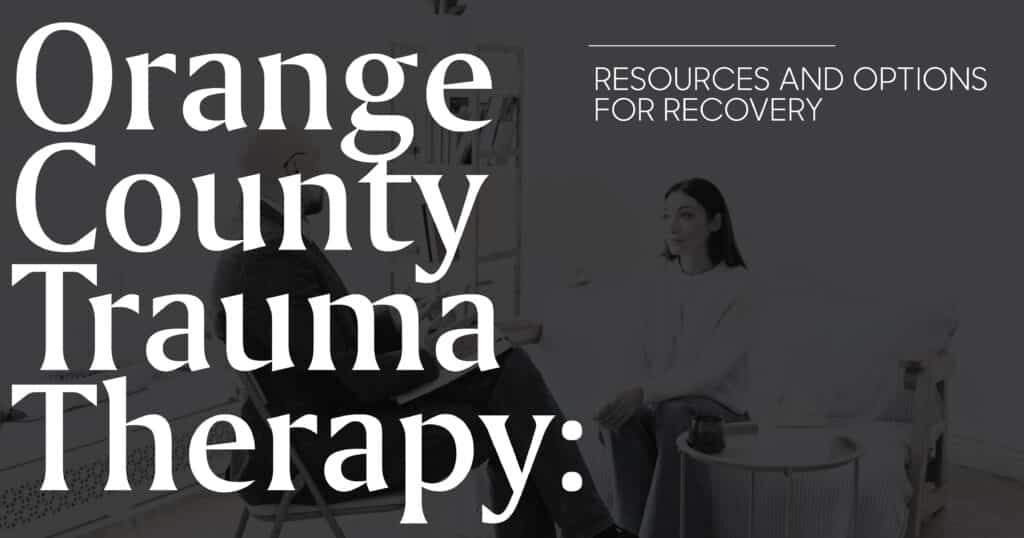Welcome to a comprehensive guide to trauma therapy resources and options in Orange County. Trauma can have a profound impact on individuals, affecting their mental, emotional, and physical well-being. In this blog, we’ll explore the various therapeutic approaches available in Orange County, empowering individuals on their journey toward healing and recovery.
Understanding Trauma in Orange County
Before delving into therapy options, it’s essential to understand the prevalence and impact of trauma in Orange County. From natural disasters to interpersonal violence, trauma can manifest in many forms and affect individuals of all ages and backgrounds. Recognizing the need for specialized care, Orange County is home to a range of trauma-informed services and resources.
Holistic Approaches to Healing
Traditional Therapeutic Modalities: Traditional therapeutic approaches such as cognitive-behavioral therapy (CBT), dialectical behavior therapy (DBT), and Eye Movement Desensitization and Reprocessing (EMDR) are widely available in Orange County. These evidence-based treatments provide individuals with the tools and support they need to process trauma, manage symptoms, and reclaim their lives.
Complementary and Alternative Therapies: In addition to traditional modalities, Orange County offers a variety of complementary and alternative therapies for trauma recovery. From mindfulness-based practices to somatic experiencing and equine-assisted therapy, these holistic approaches address the mind-body connection and promote healing on multiple levels.
Specialized Programs and Services
Trauma Recovery Centers: Trauma recovery centers in Orange County provide comprehensive, trauma-informed care to survivors of violence, abuse, and other traumatic events. These centers offer a range of services, including therapy, advocacy, case management, and support groups, tailored to the unique needs of each individual.
Child and Adolescent Services: Trauma can have a profound impact on children and adolescents, affecting their development, behavior, and relationships. Orange County provides specialized services for young survivors, including play therapy, art therapy, and family counseling, to help them process their experiences and build resilience.
Collaborative Care Models
Integrated Healthcare Systems: Recognizing that trauma often coexists with other mental health conditions and medical concerns, Orange County is embracing integrated care models that address the whole person. Healthcare providers, social service agencies, and community organizations collaborate to ensure that individuals receive comprehensive, coordinated care that meets their unique needs.
Partnerships with Community Organizations: Community organizations play a vital role in trauma recovery, providing support, resources, and advocacy to survivors. Orange County partners with these organizations to expand access to trauma-informed services, raise awareness about trauma and its impacts, and promote healing and resilience in the community.
Accessing Care and Overcoming Barriers
Insurance and Financial Assistance: Accessing trauma therapy can be challenging for many individuals, especially those facing financial barriers. Orange County offers resources and assistance programs to help individuals navigate insurance coverage, access low-cost or sliding-scale services, and find financial assistance for therapy.
Language and Cultural Considerations: Cultural competence and linguistic accessibility are essential components of trauma therapy. Orange County prioritizes diversity and inclusion, ensuring that therapy services are culturally responsive and available in multiple languages to meet the needs of a diverse population.
Conclusion:
In Orange County, trauma therapy is more than just a service—it’s a pathway to healing, resilience, and hope. By providing a range of therapeutic options, specialized programs, and collaborative care models, Orange County is empowering individuals to reclaim their lives and thrive in the aftermath of trauma. As we continue to prioritize trauma-informed care and support, let us remember that healing is possible, and no one has to walk this journey alone.





